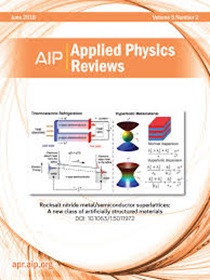生物打印功能微血管的生物力学和机械生物学设计
IF 11.6
1区 物理与天体物理
Q1 PHYSICS, APPLIED
引用次数: 0
摘要
功能微血管对体外组织结构至关重要,确保氧气、营养物质和废物的有效运输,并支持组织稳定的重要旁分泌信号。直接和间接生物3D打印的最新进展,通过精确控制细胞和细胞外基质的放置,为构建复杂的血管网络提供了有前途的解决方案。微血管从形状打印到功能形成的过程涉及内皮细胞和支持细胞的生物连接力学特性、力学微环境和力学生物学的动态变化。这篇综述探讨了如何将生物力学和机械生物学原理整合到生物打印过程中,以开发功能性微血管网络。在打印之前,基于这些原则的顶层设计方法侧重于生物材料,细胞行为和机械环境之间的相互作用,以指导微血管网络的制造。在打印过程中,对不同生物打印技术的生物墨水进行生物力学设计,优化生物打印过程的生物力学因素,确保微血管结构的精确复制,同时保持细胞活力。打印后,重点是创造一个合适的机械环境来调节新血管形成的多个步骤的机械生物学,包括启动,形态发生,管腔形成,稳定和成熟的功能微血管。最后,我们讨论了基于生物力学和机械生物学设计的未来发展,以推动功能化微血管网络的生物打印。本文章由计算机程序翻译,如有差异,请以英文原文为准。
Biomechanical and mechanobiological design for bioprinting functional microvasculature
Functional microvasculature is essential for in vitro tissue constructs, ensuring efficient transport of oxygen, nutrients, and waste and supporting vital paracrine signaling for tissue stability. Recent advancements in both direct and indirect 3D bioprinting offer promising solutions to construct complex vascular networks by allowing precise control over cell and extracellular matrix placement. The process from shape printing of microvasculature to function formation involves dynamic shift of bioink mechanical properties, mechanical microenvironments, and mechanobiology of endothelial and supporting cells. This review explores how biomechanical and mechanobiological principles are integrated into the bioprinting process to develop functional microvascular networks. Before printing, a top-level design approach based on these principles focuses on the interactions among biomaterials, cell behaviors, and mechanical environments to guide microvascular network fabrication. During printing, biomechanical design of bioinks for different bioprinting techniques, along with optimized biomechanical factors of bioprinting process, ensures accurate microvascular structure reproduction while maintaining cell viability. After printing, the emphasis is on creating a suitable mechanical environment to modulate the mechanobiology of multiple steps of neovascularization, including initiation, morphogenesis, lumen formation, stabilization, and maturation of functional microvasculature. Finally, we discuss future developments based on biomechanical and mechanobiological design to drive the bioprinting of functionalized microvascular networks.
求助全文
通过发布文献求助,成功后即可免费获取论文全文。
去求助
来源期刊

Applied physics reviews
PHYSICS, APPLIED-
CiteScore
22.50
自引率
2.00%
发文量
113
审稿时长
2 months
期刊介绍:
Applied Physics Reviews (APR) is a journal featuring articles on critical topics in experimental or theoretical research in applied physics and applications of physics to other scientific and engineering branches. The publication includes two main types of articles:
Original Research: These articles report on high-quality, novel research studies that are of significant interest to the applied physics community.
Reviews: Review articles in APR can either be authoritative and comprehensive assessments of established areas of applied physics or short, timely reviews of recent advances in established fields or emerging areas of applied physics.
 求助内容:
求助内容: 应助结果提醒方式:
应助结果提醒方式:


